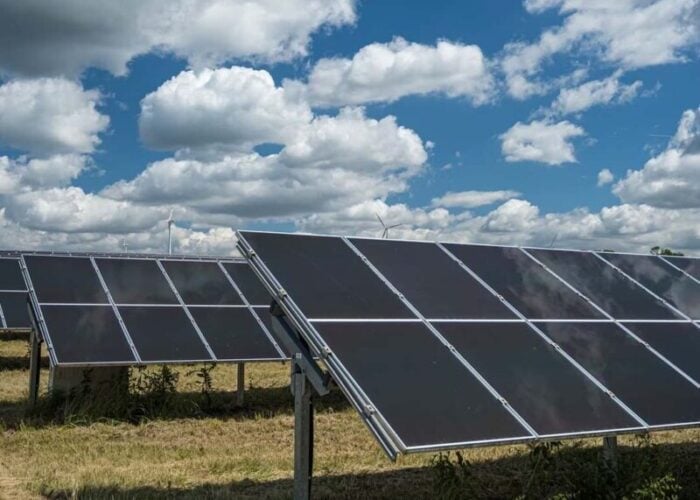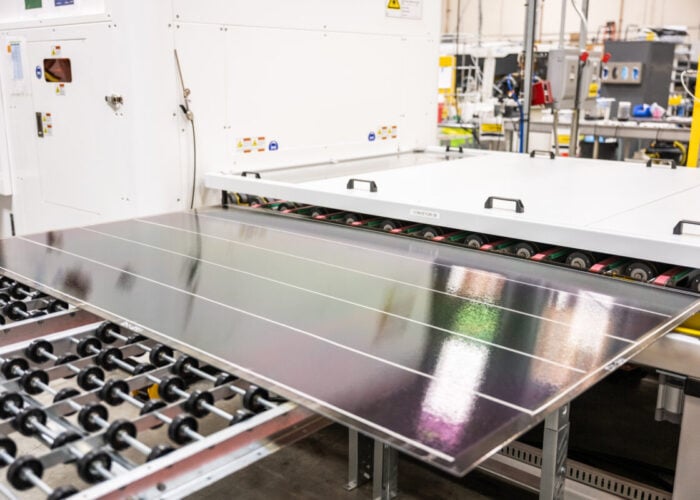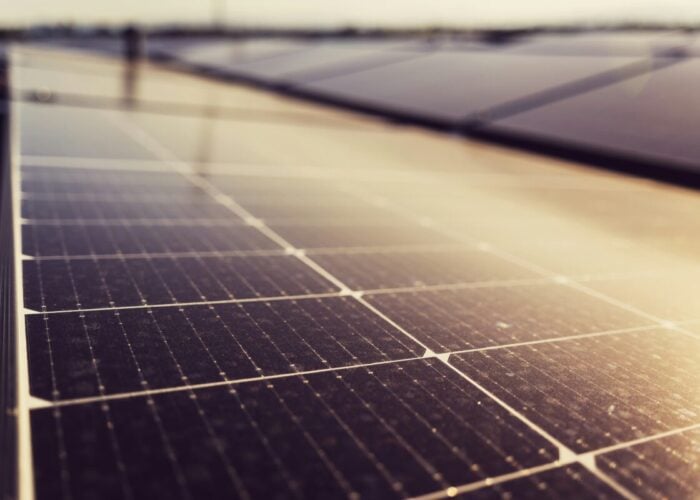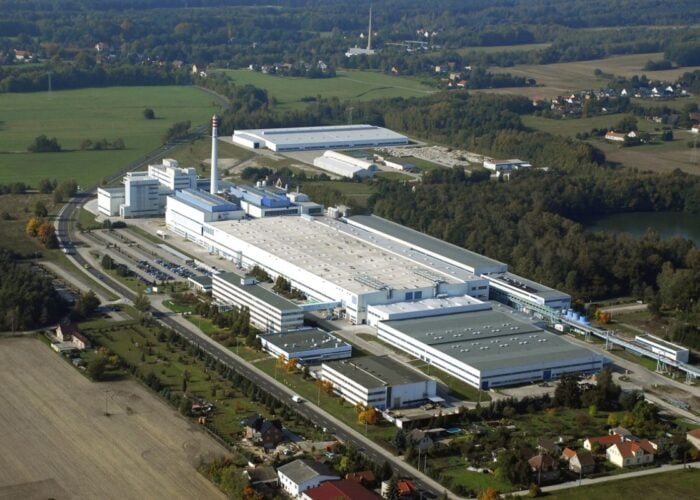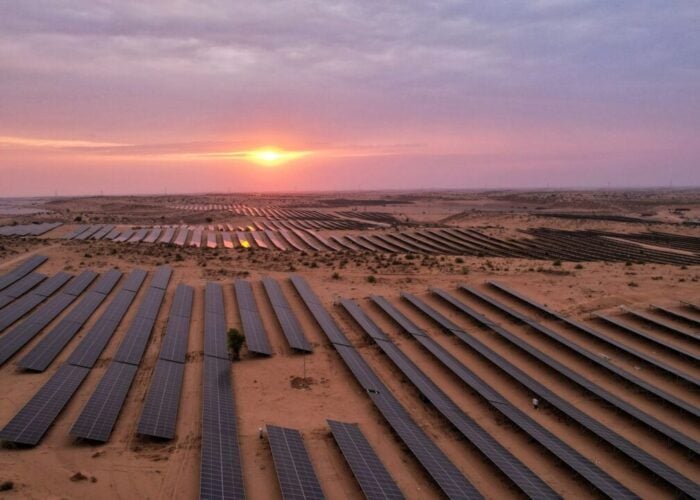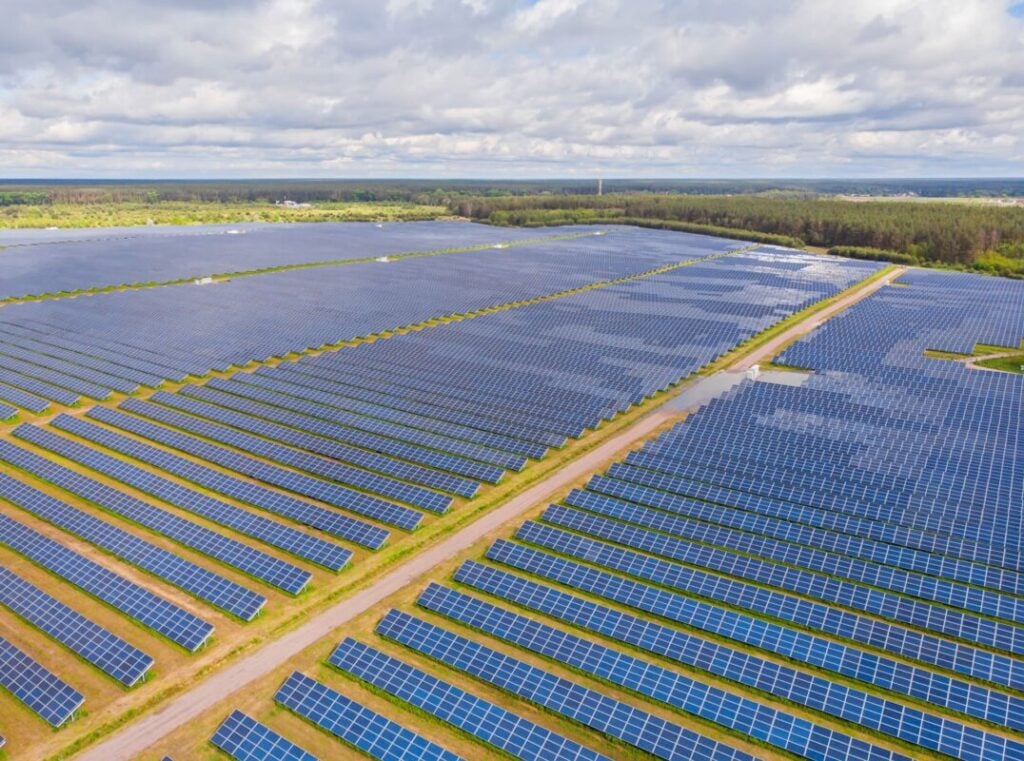
Despite India’s ambitious solar targets, challenges remain in policy, financing and grid infrastructure. Simon Yuen talks to experts in the solar industry to examine the challenges and opportunities in the Indian market.
Unlock unlimited access for 12 whole months of distinctive global analysis
Photovoltaics International is now included.
- Regular insight and analysis of the industry’s biggest developments
- In-depth interviews with the industry’s leading figures
- Unlimited digital access to the PV Tech Power journal catalogue
- Unlimited digital access to the Photovoltaics International journal catalogue
- Access to more than 1,000 technical papers
- Discounts on Solar Media’s portfolio of events, in-person and virtual
The Indian government has set an ambitious target of installing 500GW of renewables by 2030. Currently, the country aims to increase solar’s share in its power mix from 5% in FY 2022 to 17% by FY 2027 and to 25% by FY 2032. According to its 14th National Electricity Plan (NEP14), India plans to achieve 185.6GW of solar capacity by 2027, reaching 364.6GW by 2032.
However, India only added 12.9GW of solar capacity in 2023. The latest figures for clean power capacity additions from the Indian Ministry of New and Renewable Energy (MNRE) show the country added 15GW of new solar capacity in the 12 months to the end of March 2024. These installations have pushed India’s total operating solar capacity to 81.8GW. Therefore, India still needs to add 103.8GW of solar capacity to reach the capacity target in less than four years.
According to a recent report, “Solar adoption in India entering ‘accelerating growth’ phase”, published by energy think tank Ember, India’s recent addition of 12.9GW in 2023 was not enough to reach the solar target of 185.6GW. It needs to increase its current annual solar capacity addition by about 36% each year leading up to 2026-27, meaning that India needs to install at least 17.5GW of solar capacity this year.
There is a silver lining to reaching the goal in 2024 as India installed a record 6.2GW of new solar capacity in March 2024, according to a study conducted by research firm Rystad Energy. Solar PV accounted for the majority of added renewables capacity in March 2024, which surged to 7.1GW, double the previous record for new renewables capacity set in March 2022 with 3.5GW.
Commenting on the solar targets, Ali Imran Naqvi, CEO of solar advisory Gensol Group, says achieving 185.6GW of solar capacity requires an average of approximately 34.6GW per year from the current level of 81.8GW as of March 2024.
“It is within reach due to the record 16.1GW of solar capacity auctioned in 2023 alone. However, this rate of expansion, though significant, still falls short of the required pace, highlighting the need for accelerated efforts in capacity building,” he says.
Notable additions in India
Indian power major Adani’s renewables arm, Adani Green Energy, is one of India’s major companies developing renewable energy projects. In the 12 months ending March 2024, it added 2.8GW of new renewable power-generating capacity.
Adani Green Energy’s total operating renewables capacity reached 10.93GW as of the end of March 2024. Of this capacity, solar PV and solar-plus-wind hybrid projects accounted for 7,393MW and 2,140MW respectively. The remaining capacity was from wind projects.
A major solar PV project from Adani Green Energy that started operation this year is a 551MW solar project in Gujarat, India. It is also part of a plan to build a 30GW renewable energy park located in Khavda, a village in the Kutch district of Gujarat.
Meanwhile, the state-owned Solar Energy Corporation of India (SECI) allocated 1.5GW of solar capacity in a recent tender, with four businesses winning the bid at an average price of INR2.56 (US$0.031) per kWh. JSW Neo Energy secured the highest share of 700MW, followed by Sunsure Solarpark Fourteen (300MW), Tejorupa Renewables India Project (250MW) and NTPC Renewable Energy (250MW).
Federal and state-level policies
Policies play a crucial role in driving India’s solar sector growth. At the national level, Renewable Purchase Obligations (RPOs) are “driving a guaranteed market for solar power producers”, according to Naqvi, as the obligation to consume power generated by renewables could boost clean power auctions, while distribution companies will be pushed to sign offtake agreements.
RPOs are mandates set by the Indian government to ensure a certain percentage of electricity consumption comes from renewables. These obligations are imposed on entities responsible for the distribution, transmission and trading of electricity. Distribution companies (DISCOMs) and open-access consumers are some of the entities to which PROs apply.
Meanwhile, Vibhuti Garg, director of South Asia at the Institute for Energy Economics and Financial Analysis (IEEFA), says the Indian government’s targets of 175GW of renewables by 2022 and 500GW of renewables capacity by 2030 are driving multiple policies and fiscal initiatives to support solar capacity deployment in the country.
One example is the PM-Kusum scheme, which aims to ensure energy security for farmers in India. Under this scheme, 10GW of decentralised grid-connected renewables power plants, ranging from 500kW to 2MW, are set up on barren land.
The renewables projects are installed within a 5km radius of the substations to avoid the high cost of sub-transmission lines and reduce transmission losses. Local DISCOMs will purchase the generated electricity at a pre-fixed tariff.
Financially, India’s Central Electricity Regulatory Commission (CERC) amended the sharing of inter-state transmission charges in 2023 to waive interstate transmission system charges for renewables projects commissioned by 30 June 2025, which could lower the cost of renewables in India.
In some states, the governments have taken different measures to increase solar installation capacity. According to Ember, Gujarat and Karnataka are well prepared to continue the electricity transition and have integrated renewables into their power sectors.
In collaboration with the IEEFA, Ember’s report “Indian States Electricity Transition (SET) 2024” examines 21 Indian states to help identify areas that require action and attention at state levels. Three electricity transition dimensions are included in the report: decarbonisation, readiness and performance of the power ecosystem and market enablers.
Gujarat and Karnataka are the only Indian states that have become top performers across all dimensions. In the market enable category, Karnataka boasts a competitive incremental green tariff rate of INR0.5 (US$0.006) per kWh, an existing renewable energy policy applicable until 2027, and the adoption of green open access rules.
Karnataka also leads with a high number of electric vehicle (EV) public charging stations, boasting one station per 62 EVs as of January 2024. The state also surpasses Delhi and Maharashtra with 5,059 public EV charging stations.
Gujarat is one of the “frontrunners” with functional state renewable energy policies, and its green tariff rate (INR1.5 per kWh) is the highest among all states.
Challenges of reaching India’s renewables goal
However, meeting the renewables goal requires more effort from the government and the renewables sector.
Vinay Rustagi, senior director and global head of renewables at Indian analyst firm Crisil, says: “The utilities are increasingly concerned with how much renewable power they can absorb into the grid because of its variability profile.”
The Indian government plans to augment the transmission network. In the Indian power ministry study, “Transmission System for Integration of over 500GW RE Capacity by 2030”, the Indian government presents a transmission system roadmap for reliable integration of 537GW renewable energy capacity by 2030.
The transmission schemes have been planned with battery energy storage systems (BESS) to meet the requirement for round-the-clock power. Several high-voltage direct current (HVDC) transmission corridors have also been planned for the evacuation of power from large renewable energy potential zones.
Moreover, the length of the transmission lines and substation capacity planned under the Inter State Transmission System (ISTS) for the integration of additional wind and solar capacity by 2030 has been estimated at 50,890 circuit kilometres and 433,575MVA (mega volt-ampere), respectively, at an estimated cost of INR2,442 billion (US$29.3 billion).
The additions represent an increase in cumulative inter-regional transmission capacity from 112,250MW to about 150,000MW in 2030.
“But most of that plan is running significantly behind schedule. We are already seeing a tremendous shortage of evacuation infrastructure in most states across the country,” Rustagi adds.
Naqvi says policy continuity could be a concern although current initiatives are encouraging. “Changes in government or political priorities could lead to instability and deter investors,” he comments.
This year’s Indian general election takes place between April and June. With the existing government looking likely to win the election, Rustagi doesn’t expect any changes in favourable policies.
“But even if there are any changes in the government, the overall fundamentals of the solar sector are so compelling that we expect policy support to continue broadly in the same form,” Rustagi says.
Finance
Financing is another challenge that could hamper India’s efforts to increase its installed renewables capacity. In India, financing solar projects has traditionally been a challenge due to high upfront costs and limited access to long-term debt, but Naqvi believes there is positivity on the financing front.
In April, the Reserve Bank of India kept the key interest rate unchanged at 6.5% for a seventh straight policy meeting. According to a Reuters report in March, the majority of analysts predicted that the rate would go down in the second half of 2024.
“Key rates in India are expected to decline significantly by year’s end, allowing developers to access cheaper rupee-denominated debt and breathe some life back into project financing,” he says.
Meanwhile, foreign exchange rates could also add uncertainty. The appreciation of the rupee against the US dollar could benefit dollar-linked debt, but it could also hurt export-oriented manufacturers in the solar sector who rely on US dollar sales.
Aside from foreign exchange rates and interest rates, India is expected to witness a significant increase in renewables investment in 2024. The country’s power ministry said in late 2023 that India will witness a more than 83% increase in investments in renewables projects to about US$16.5 billion in 2024.
There are several reasons for the increase in investment. First, commercial and industrial (C&I) consumers are increasingly opting for renewable energy thanks to its decarbonisation advantage and cost-effectiveness.
Rustagi adds that the corporate market in India is growing rapidly as most large corporations have adopted aggressive targets for decarbonisation. “They’re turning to renewables to reduce their emissions and become green as part of that process,” he says.
Naqvi says this demand is boosting investment in solar and wind power, with hybrid models gaining popularity for their reliable power supply and reduced balancing costs.
Currently, funding sources are diversifying beyond traditional debt and equity options, although they are still dominant sources. Venture capital, mergers and acquisitions, and private equity deals are gaining popularity in the Indian solar industry.
Investments are also flowing into domestic solar equipment manufacturing. In August 2023, solar manufacturer Waaree Energies announced that it would expand its ingot, wafer, cell and module production capacity by 6GW following a second-round equity funding raise of around INR10 billion (US$121 million).
The funding was led by Indian-headquartered investment firm ValueQuest and follows the INR19.23 billion awarded to Waaree under the Indian government’s production-linked incentive (PLI) scheme in March 2023.
The reimposition of the ALMM
India’s Ministry of New and Renewable Energy (MNRE) reimposed the Approved List of Models and Manufacturers (ALMM), effective from 1 April.
Only PV models and manufacturers included in ALMM are eligible for use in government projects and projects under government schemes and programmes. The ALMM list was introduced in 2019-2020 to benchmark domestic manufactured solar cells and modules and boost the development of the domestic manufacturing industry.
MNRE said in a statement: “Each project where the solar PV modules have been received at the project site by 31 March 2024 and is unable to get commissioned by that day, on account of reasons beyond the control of the renewable power developer, would be examined separately.”
The ALMM was suspended from March 2023 due to concerns over an inadequate supply of domestically made modules to meet demand. Thus, projects commissioned by the end of March 2024 will be exempted from the requirement of procuring solar PV modules from ALMM.
Neshwin Rodrigues, an India electricity policy analyst at Ember, says the ALMM currently applies only to modules; solar PV cells and wafers can still be imported.
“India’s current enlisted module manufacturing capacity of about 41.5GW is enough to meet the annual domestic demand of 30GW in order to reach the 185.6GW target,” Rodrigues says.
Naqvi adds the ALMM has both positive sides and drawbacks.
“By including only pre-vetted manufacturers on the list, the risk of low-quality panels impacting project performance is reduced. Additionally, the policy prioritises Indian manufacturers, potentially creating a fairer playing field and incentivising domestic production. This can lead to a stronger domestic solar industry, reducing reliance on imports and potentially lowering project costs in the long run,” he says.
On the flip-side, the ALMM could stifle competition and potentially inflate module prices in the short term by limiting options to pre-approved manufacturers.
Additionally, newcomers with potentially more efficient or cost-effective technologies could be discouraged from entering the market if they face hurdles in getting listed under ALMM. The approval process can add bureaucracy to project development, leading to project delays.
To optimise the ALMM, Naqvi suggests that the scheme could be rolled out gradually to allow for a smooth industry transition. Other measures include a grace period or waiver mechanism that enables developers to use non-ALMM equipment in specific situations, such as limited availability of approved products or use of innovative technologies.
Exceptions or a fast-track approval process for strategically important projects or regions with limited access to ALMM equipment can also expedite project timelines.
Will India reach its renewable goal?
After considering the challenges and favourable conditions in the Indian solar industry, the experts are optimistic about India’s solar industry between now and 2030.
“The country has a huge solar potential with some parts of the country having 300-330 sunny days a year. Moreover, India is rightly adopting the whole ecosystem approach, where the country is trying to reduce import dependence across the supply chain. Availability of critical minerals will be key, and India again is addressing the huge critical mineral requirement by expanding exploration or tying up with other countries for sourcing,” says Garg. She adds that India should consider developing off-grid projects, as land availability can become a bottleneck.
Rustagi also mentions the importance of rooftop solar PV systems in India’s renewables goal. Historically, the residential rooftop market has accounted for only about 15% of total solar installations in India. “But the government is giving a lot of emphasis in this sector, and we expect robust growth in the rooftop solar sector,” he says.
In February, the Indian government announced its interim budget for 2024-25, including plans to allow the public to access solar and allocate more resources to the Ministry of New and Renewable Energy (MNRE).
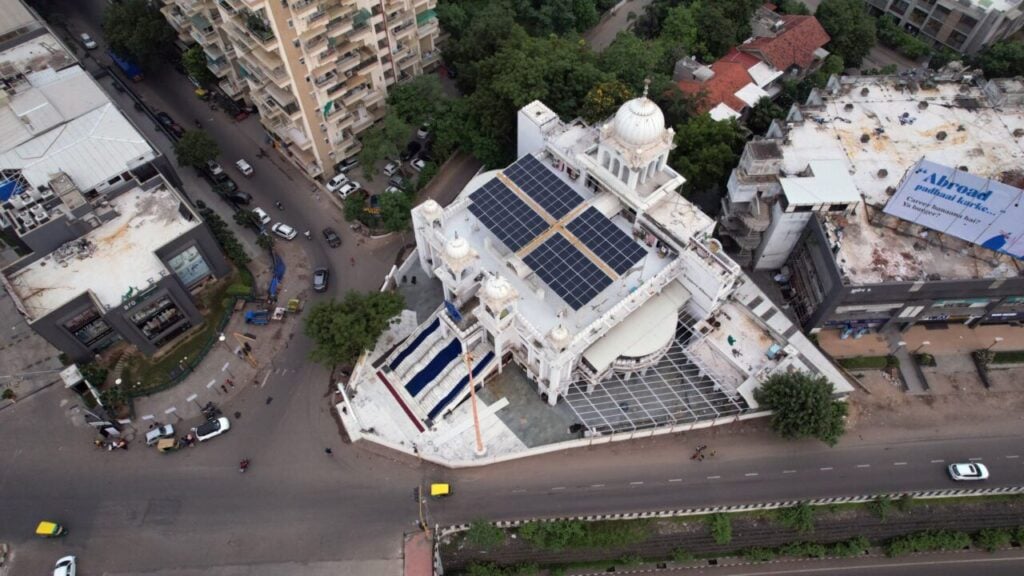
One of the plans is to allow 10 million households to obtain free solar electricity every month. Indian finance minister Nirmala Sitharaman proposes that free 300kWh of electricity will be provided to 10 million households in India every month under the rooftop solar plan. The beneficiaries can save up to INR18,000 (US$216) from free electricity and sell the surplus to distribution companies.
Lastly, Naqvi says investing in grid infrastructure and exploring innovative financing solutions could help India reach its solar goal.
“Next year is expected to surge in commissioning activity, especially in the first half, as developers rush to use the 100% waiver on interstate transmission charges. Additionally, the government’s ambitious plan to equip 10 million households with rooftop solar PV systems promises significant growth in the residential segment,” he says.

